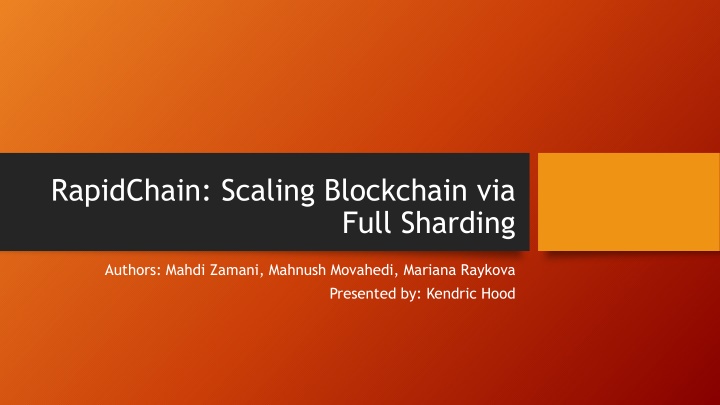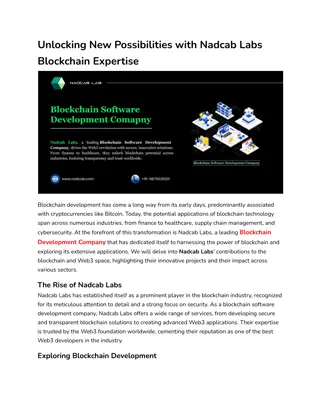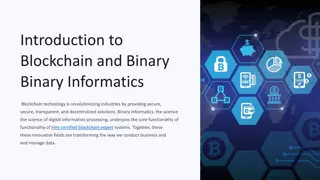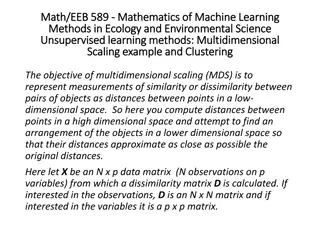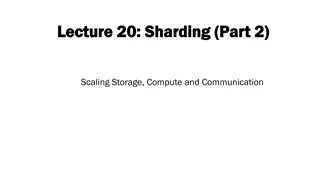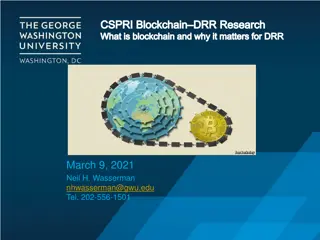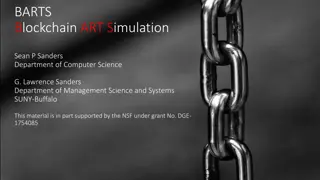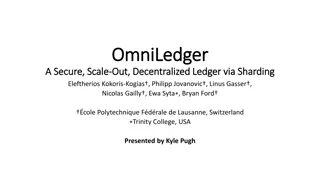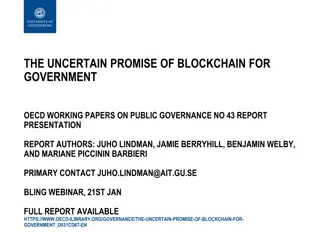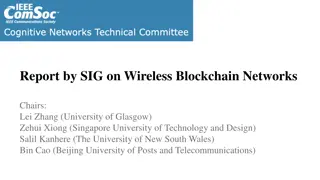RapidChain: Scaling Blockchain via Full Sharding
RapidChain is a blockchain scaling solution utilizing full sharding to enhance performance. The protocol involves bootstrapping, consensus using PBFT, reconfiguration with the Cuckoo rule, and cross-shard transactions for efficient processing. Committees are reshuffled for tolerance to Byzantine peers, and transactions are uniformly distributed across committees for fund confirmation.
Download Presentation

Please find below an Image/Link to download the presentation.
The content on the website is provided AS IS for your information and personal use only. It may not be sold, licensed, or shared on other websites without obtaining consent from the author.If you encounter any issues during the download, it is possible that the publisher has removed the file from their server.
You are allowed to download the files provided on this website for personal or commercial use, subject to the condition that they are used lawfully. All files are the property of their respective owners.
The content on the website is provided AS IS for your information and personal use only. It may not be sold, licensed, or shared on other websites without obtaining consent from the author.
E N D
Presentation Transcript
RapidChain: Scaling Blockchain via Full Sharding Authors: Mahdi Zamani, Mahnush Movahedi, Mariana Raykova Presented by: Kendric Hood
Steps in The Protocol 1. Boot Strapping 2. Consensus (PBFT) 3. Reconfiguration (Cuckoo rule)
Boot Strapping Relies on a hard coded seed in all peers and a known network size. Selects a reference committee Reference committee then generates a random series of bits that nodes use to establish identities. These identities are then used to determine which committee the peer is apart of. Each committee is of size O(log(n))
Consensus The leader of the committee will prose a new block Then each committee member will gossip what they have hard If the committee members hear +1 of the same block that block is selected as the new block. Otherwise they land on a safe value If a block is pending (not agreed upon by the end of the consensus) then it is carried over to the next consensus
Reconfiguration In this period committee members are shuffled around and new members are allowed to be added. Not all peers will change committees, but enough will change to Guarantee the tolerance to byzantine peers They use the Cuckoo rule to move peers around and add new peers
Cross shard transactions Transactions are disturbed uniformly and at random to committees This means that transaction will almost always rely on transactions in other committees to confirm the presence of available funds. They move money to the committee that the new transaction is apart of with a series of transactions, one for each transaction that is on a different committee, and ensure that this transaction is routed to the committee that the new transaction is apart of.
